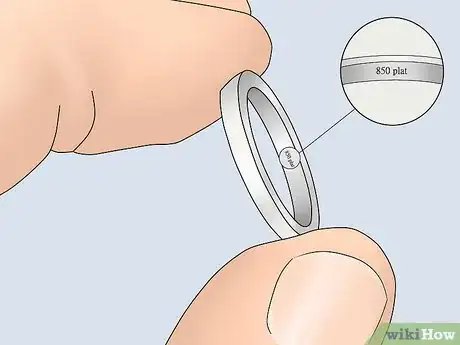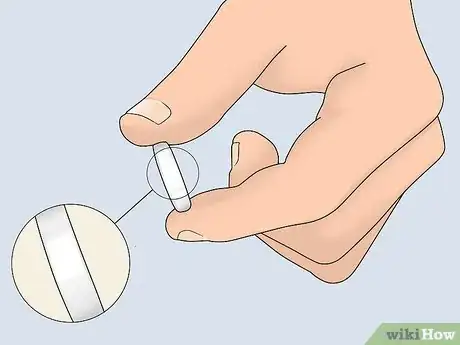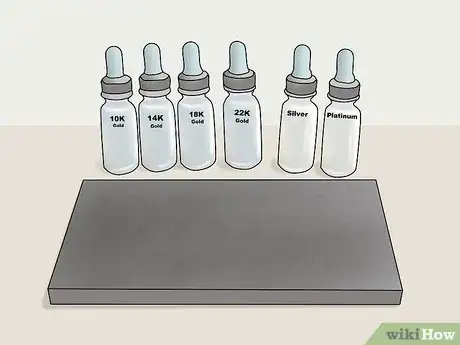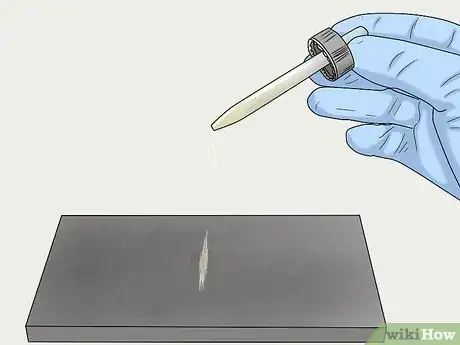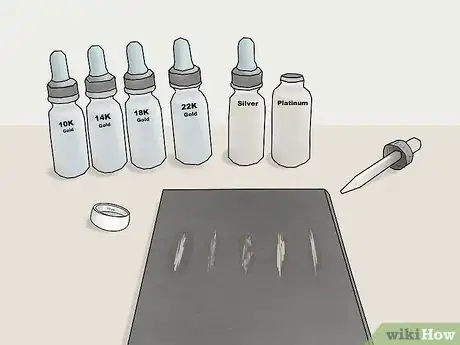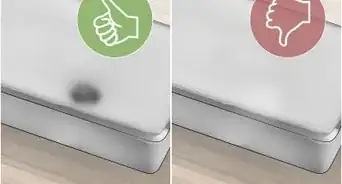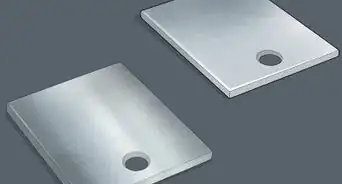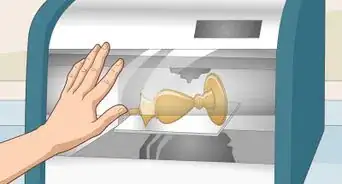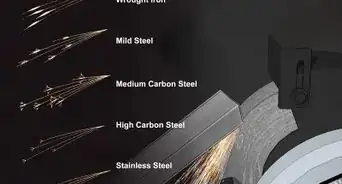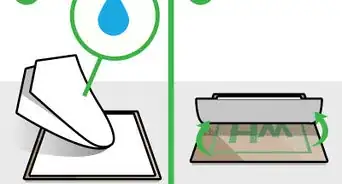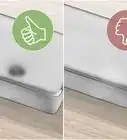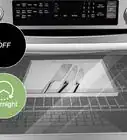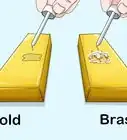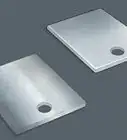This article was co-authored by Kennon Young. Kennon Young is a Master Gemologist Appraiser and the Owner of Vermont Gemological Laboratory in Burlington, Vermont. With over 20 years of experience in the industry, Kennon and his team specialize in handmade engagement rings, wedding bands, and custom jewelry. He attended the Revere Academy of Jewelry Arts, the Gemological Institute of America, and the Rhode Island School of Design Extension. He is a Jewelers of America (JA) Certified Bench Jeweler Technician and received the highest credential in the jewelry appraisal industry, the ASA Master Gemologist Appraiser, in 2016.
There are 7 references cited in this article, which can be found at the bottom of the page.
This article has been viewed 89,846 times.
Platinum is a precious metal that looks like silver or white gold to the untrained eye. But platinum has many characteristics that make it unique. It is harder than other precious metals, so it resists scratches. It also doesn't tarnish and is denser than other precious metals. To see if your piece is platinum, first look for a stamp, or hallmark. If you can't find one or aren't sure what it means, try an acid scratch test. If all else fails, take your piece to a jeweler to find out what kind of metal it is.
Steps
Inspecting the Metal Visually
-
1Look for an inscription that says "platinum" on the item. Pure platinum jewelry and jewelry that is at least 50% platinum should be marked with a stamp, also known as a hallmark. If your piece is marked with the word "platinum," it is at least 95% pure. More commonly, you will see a number like 850 or 85 followed by "pt" or "plat." This indicates that 85/100 parts are platinum, meaning the piece is 85% pure.[1]
- Your platinum jewelry may not be stamped if it is from a country that does not require these markings or if it is very old.
- Any metal that is less than 50% platinum will not be marked.
-
2Inspect for a bright, white appearance, few scratches, and no tarnish. Compared to silver, white gold, and palladium, platinum has a brighter and whiter color. Compare to another piece of metal to see the difference. It is also more scratch-resistant, although it can still be scratched. However, you should still see very few scratches. Finally, if the piece is tarnished, it is silver, not platinum.
- The color and visual qualities of the metal can tell you if the metal is likely to be platinum, but conduct other tests to be sure.
Advertisement -
3Use a magnet to determine that metal is not platinum. Platinum is not magnetic. Therefore, if the piece you are testing is attracted to a magnet, you will know it is not platinum.[2]
- If you notice a slight magnetic pull, it is more likely that the metal is white gold mixed with nickel.
Using a Scratch Test
-
1Buy an acid scratch test kit to verify platinum jewelry. If you can't find any marks on your jewelry, or you aren't sure what they mean, buy an acid scratch test online or at a jewelry store. Acid scratch test kits come with a scratch stone and bottles of different kinds of acid.[3]
- Many scratch kits come with tests for several different kinds of metals. This could be useful if you discover your piece is not platinum and you want to find out what kind of metal it is.
-
2Scratch the piece a few times on the stone. Platinum is difficult to scratch, so you may have to run it over the stone a few times while applying some pressure. Leave a visible mark around 1 to 1 1⁄2 inches (2.5 to 3.8 cm) long on the stone.[4]
- The stone will leave a scratch mark on your jewelry, so choose a small, inconspicuous part to test.
-
3Wear latex or vinyl gloves and drop the platinum testing acid on the stone. Always protect your skin while handling acid by wearing gloves. Use the dropper in the bottle of acid to place one or two drops onto the scratch mark you put on the stone.[5]
- Put the cap back on the acid immediately after using it, make sure the cap is tight, and put it back in the kit to prevent spills or accidents.
-
4Watch for the acid to react with the metal on the stone. If the metal dissolves immediately in the acid, it is not platinum. Platinum will retain the same color and brightness underneath platinum testing acid.[6]
- Make sure the acid is at room temperature (around 72 °F (22 °C) or lower). If you warm the acid, it will dissolve platinum.[7]
-
5Continue testing with other acids if the piece is not platinum to find out what it is. Make new scratches on the stone for each different kind of acid. Test one acid on the stone at a time. If the scratches all dissolve, the piece is not platinum, silver, or white gold.[8]
Expert Q&A
Did you know you can get expert answers for this article?
Unlock expert answers by supporting wikiHow
-
QuestionAre there different types of platinum? Why does some platinum jewelry look so different?
 Kennon YoungKennon Young is a Master Gemologist Appraiser and the Owner of Vermont Gemological Laboratory in Burlington, Vermont. With over 20 years of experience in the industry, Kennon and his team specialize in handmade engagement rings, wedding bands, and custom jewelry. He attended the Revere Academy of Jewelry Arts, the Gemological Institute of America, and the Rhode Island School of Design Extension. He is a Jewelers of America (JA) Certified Bench Jeweler Technician and received the highest credential in the jewelry appraisal industry, the ASA Master Gemologist Appraiser, in 2016.
Kennon YoungKennon Young is a Master Gemologist Appraiser and the Owner of Vermont Gemological Laboratory in Burlington, Vermont. With over 20 years of experience in the industry, Kennon and his team specialize in handmade engagement rings, wedding bands, and custom jewelry. He attended the Revere Academy of Jewelry Arts, the Gemological Institute of America, and the Rhode Island School of Design Extension. He is a Jewelers of America (JA) Certified Bench Jeweler Technician and received the highest credential in the jewelry appraisal industry, the ASA Master Gemologist Appraiser, in 2016.
Master Gemologist Appraiser Platinum is typically mixed with another alloy. So there's platinum-iridium, which tends to be easier to cast and work with. Platinum-iridium is a whiter metal, but it's also softer so it doesn't tend to be as durable. The other popular form of platinum is platinum-ruthenium, or platinum Ru. Platinum Ru is a much harder material, but it's a little harder to polish and finish. It also has a bit of a gray tint to it. This is why you see a little bit of variation between different types of platinum.
Platinum is typically mixed with another alloy. So there's platinum-iridium, which tends to be easier to cast and work with. Platinum-iridium is a whiter metal, but it's also softer so it doesn't tend to be as durable. The other popular form of platinum is platinum-ruthenium, or platinum Ru. Platinum Ru is a much harder material, but it's a little harder to polish and finish. It also has a bit of a gray tint to it. This is why you see a little bit of variation between different types of platinum.
References
- ↑ Kennon Young. Master Gemologist Appraiser. Expert Interview. 11 September 2019.
- ↑ https://www.chemical-supermarket.com/files/TestingPreciousMetalsFirstPrinting.pdf
- ↑ https://youtu.be/MBseKUZ0OvA?t=27
- ↑ https://youtu.be/MBseKUZ0OvA?t=61
- ↑ https://youtu.be/MBseKUZ0OvA?t=92
- ↑ https://youtu.be/MBseKUZ0OvA?t=109
- ↑ https://www.chemical-supermarket.com/files/TestingPreciousMetalsFirstPrinting.pdf
- ↑ https://youtu.be/MBseKUZ0OvA?t=173
- ↑ Kennon Young. Master Gemologist Appraiser. Expert Interview. 11 September 2019.
